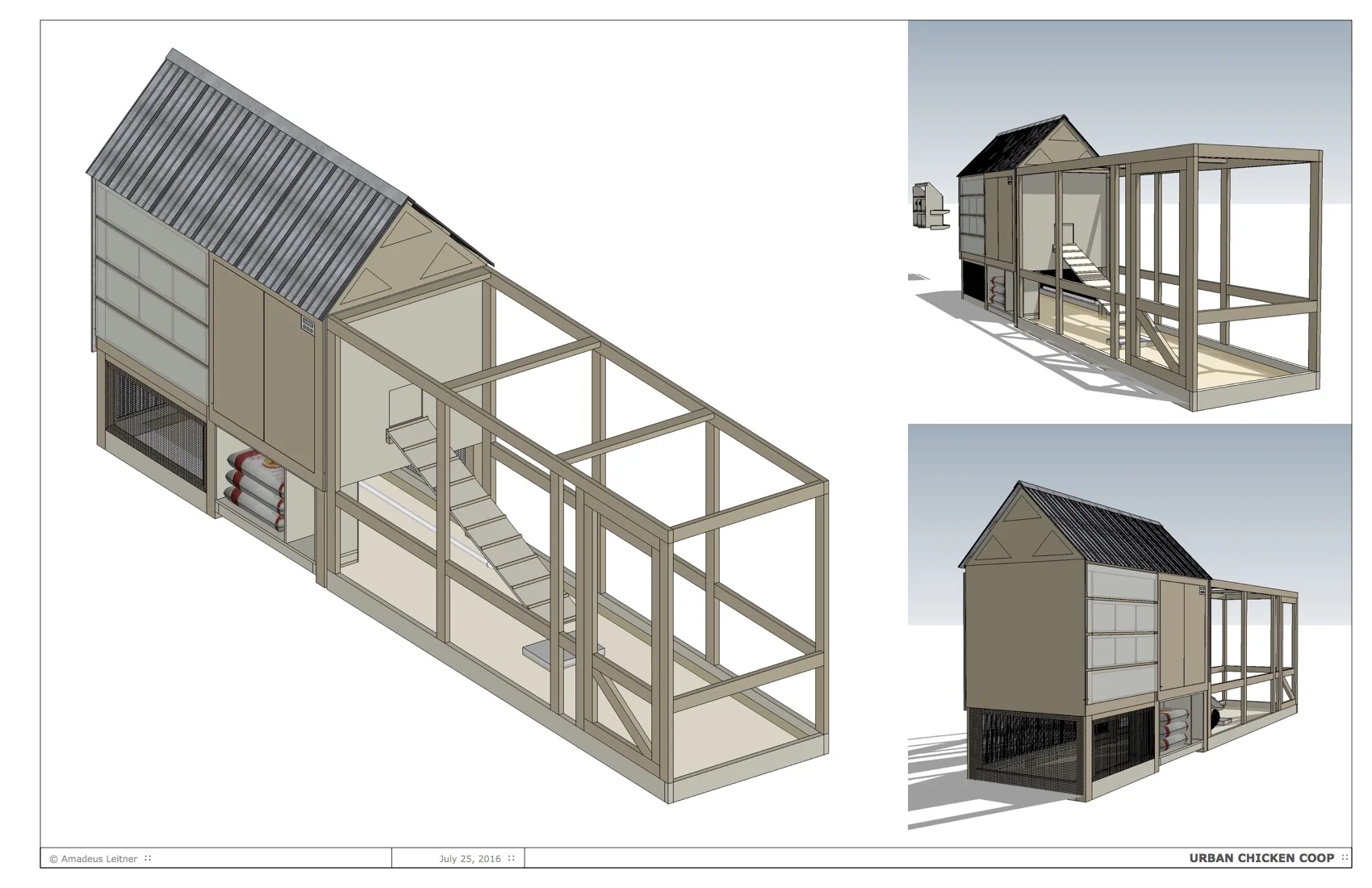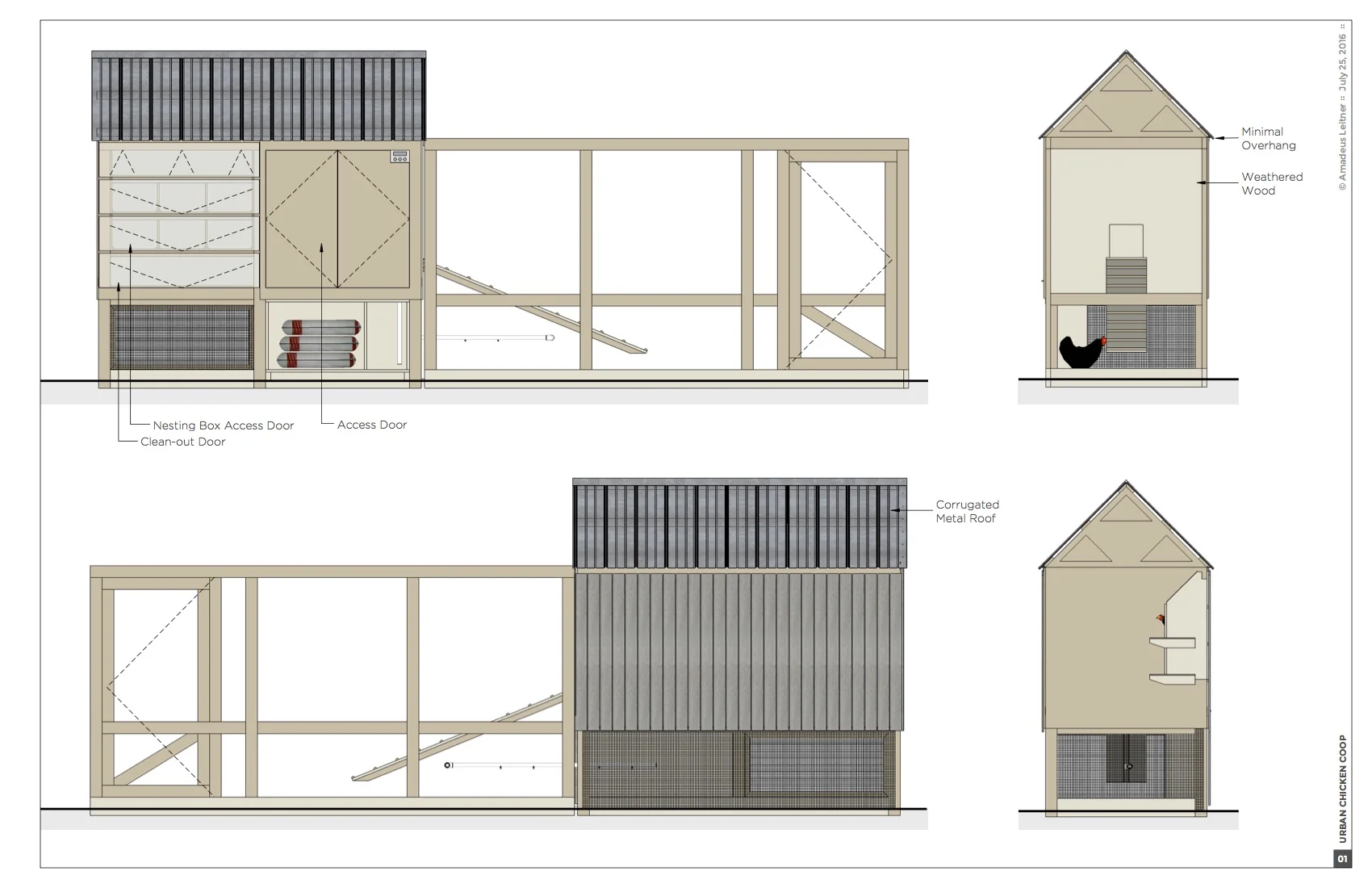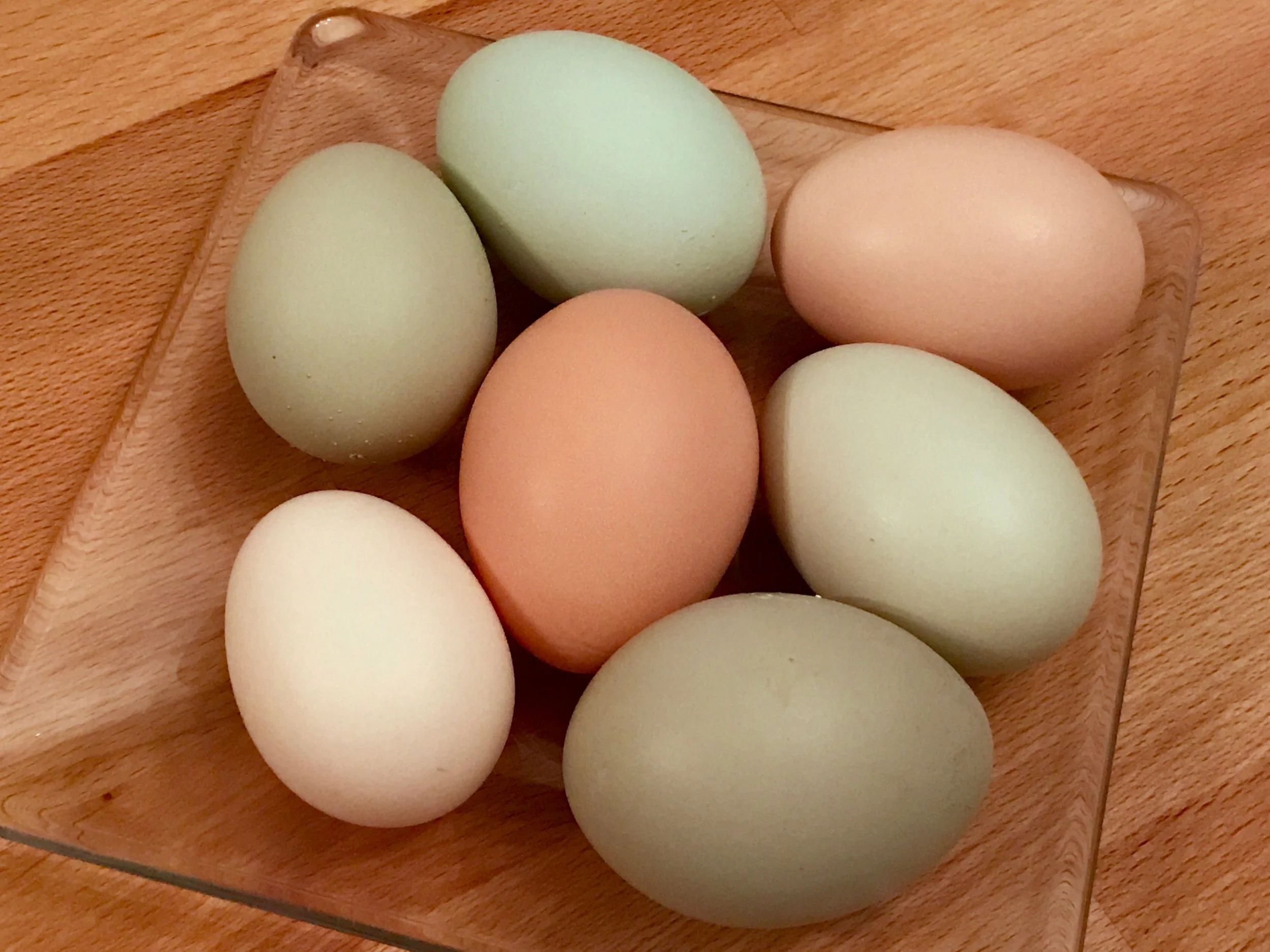Urban Chicken Coop
I recently bought a house in the historic Nob Hill, and I wanted to use a small underutilized portion of the site for a chicken coop. This turned out to be a really fun design and engineering exercise, as well as a social and economic experiment!
The space available on my site constrained the design to a 4' width and 20' length. I researched our zoning limitations for avian livestock and determined that properties in Nob Hill are allowed up to 15 chickens, one of which can be a rooster. From various online resources including several universities and the department of agriculture, I found the optimal square-foot requirements per bird and designed a layout that would provide the flock with plenty of space to thrive within the coop, while having the option to free-range at my discretion.
The design had to be economical to compete with the existing farmers market prices of $5/dozen. Calculations of average flock production compared to my growing family's anticipated consumption of eggs determined how many laying hens we would need to make the project viable. I had to consider locally available breeds of chickens, how many eggs they typically produced, the temperament and cooperation of breeds. As a designer I had to consider what color of eggs each breed would produce, purely for aesthetics of course!
When I was a kid our family raised a small flock of chickens as a project for 4H. I learned some lessons from that experience, notably that the experience of gathering eggs and cleaning the coop was to be avoided at all costs. I wanted to design these tasks as painless as possible with this coop, which has been highly successful in comparison to my childhood experience!
To start I designed the nesting boxes to be accessible from the exterior of the coop without having to walk through the coop to get to them. This means I can go collect eggs in the morning for my breakfast without stepping in anything. Providing clean water was the next major hurdle, which I solved using a new invention called a chicken nipple that allows the birds to push a spring-loaded rod to release drips from a 5-gallon bucket. They love it because their water is always clean, and I love it because I don't have to clean their water container on a daily basis! For the cold months I found a heating element designed for stock tanks that keeps the water 1-2 degrees above freezing. That alone saves hours of breaking ice, rinsing and refreshing water supply for the flock.
Being that the site constraints were limited to 4'x20', and the budget had to be below a reasonable threshold, the form of the structure had to be constructed of inexpensive materials, simple to construct, sturdy and weatherproof, and transportable in the event that we acquire a larger property. Therefore, the main coop is constructed as a 4'x8' common dimension of 3/4" plywood and 4"x4" columns that can be loaded onto a truck or trailer, and the run extending from the coop is 4'x12' and can also be moved as a lightweight module.
I started with a flock of 10 chicks that grew to be 9 hens and 1 rooster. I monitored their behavior and have adapted a few things from my initial design, making this a fun hobby project that has also provided nutritious organic eggs for my family and friends. My initial expectations of .5-.75 eggs per day per hen have proven to be fairly reliable depending on how much I let the hens free-range. In the winter I have a light on a timer that ensures that the hens get 13 hours of waking light per day, which keeps their ovulation (egg-laying cycle) running, This does not negatively impact their longevity or well-being,
After months of watching our rooster "Hansel" mature into the majestic specimen that he was, we ended up getting tired of his aggressive behavior and his incessant crow.
He now lives on a farm in the Jemez mountains where his sole purpose is to do what a rooster does.


































